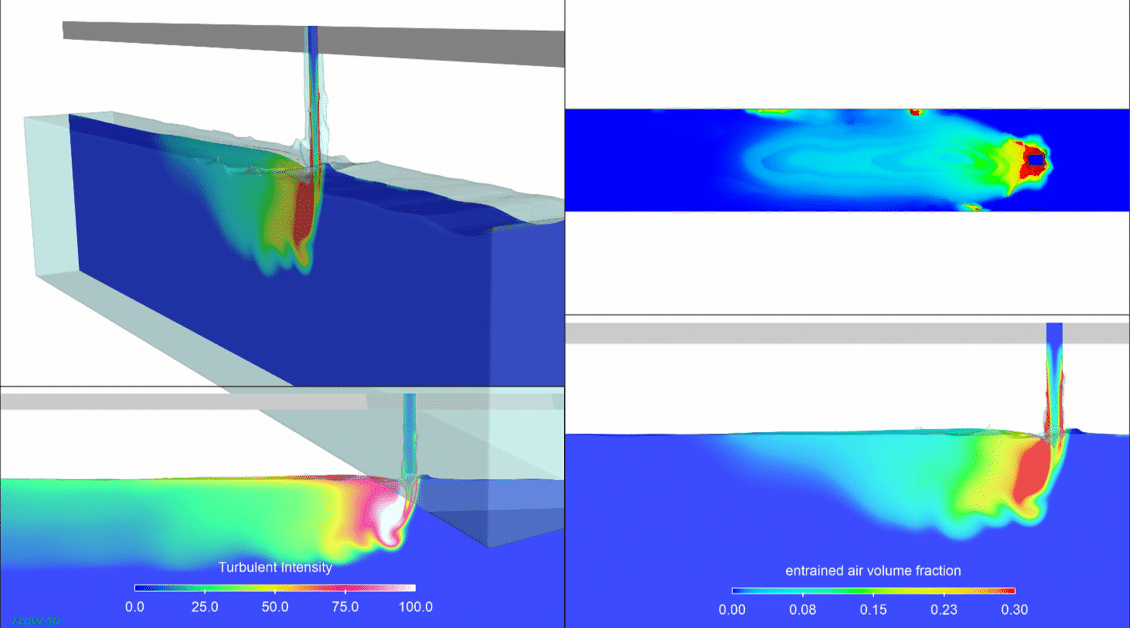
Air Entrainment
FLOW-3D‘s air entrainment model is a powerful tool that simulates the entrainment of undissolved gas bubbles at free surfaces. Capabilities include localized and turbulent free surface entrainment observed at impinging jets and spillways.

Spillway hydraulics
Spillway structures must be designed to handle a wide range of operating conditions. As the flow conditions reach the upper end of the design range, irregularities on the spillway surface can cause flow separation. This in turn can cause the pressures on the spillway surface to become low enough to cause cavitation. Cavitation is highly detrimental to the strength of the structure and can lead to catastrophic failure.
Entraining air is a means of reducing the likelihood of cavitation. When air is present in the water it adds a damping effect to the collapsing bubbles of cavitating regions, thus reducing cavitation damage. If the velocities in the spillway are sufficiently high, then aeration devices should be added to entrain air and reduce cavitation.
In the stepped spillway simulation shown above, the turbulent boundary layer grows from the channel wall as the flow moves over the spillway crest. The existence of air entrainment at the free surface is called the inception point.
Fish passage design
When air is entrained into water, it can help sustain the growth of microorganisms and support the survival of healthy fish populations. However, dissolved gas at supersaturated conditions has been identified as a water quality issue which negatively affects aquatic organisms. FLOW-3D‘s air entrainment model is used to determine the concentrations of air entrained from spillways that is released into a river downstream.
Municipal systems
The air entrainment model offers the option to include buoyancy and bulking in the output, meaning that areas of variable density flows can be accurately represented. This is especially important when designing infrastructure for municipal water and wastewater transport, such as the two drop shaft models below.
